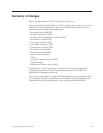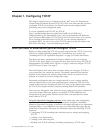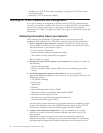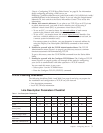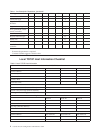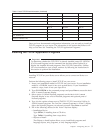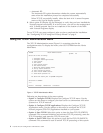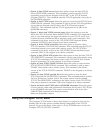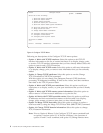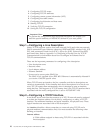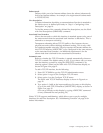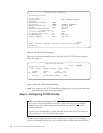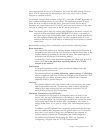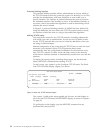
v Option 5. Start TCP/IP servers: Select this option to issue the Start TCP/IP
Server (STRTCPSVR) command. This command is used to start the TCP/IP
application servers that are shipped with OS/400
®
or the TCP/IP licensed
program (5769-TC1). This command starts the TCP/IP application server jobs in
the QSYSWRK subsystem.
v Option 6. End TCP/IP servers: Select this option to issue the End TCP/IP Server
(ENDTCPSVR) command. This command is used to end the TCP/IP application
servers that are shipped with OS/400 or the TCP/IP licensed program
(5769-TC1). This command ends the TCP/IP application server jobs in the
QSYSWRK subsystem.
v Option 7. Work with TCP/IP network status: Select this option to issue the
Work with TCP/IP Network Status (WRKTCPSTS) command. This command is
used to view and manage the status information of your TCP/IP and IP over
Systems Network Architecture (SNA) interfaces, routes, and connections. This
command is the iSeries version of the TCP/IP NETSTAT (Network Status)
command. NETSTAT is also shipped as an iSeries command.
v Option 8. Verify TCP/IP connection: Select this option to issue the Verify
TCP/IP Connection (VFYTCPCNN) command. This command tests the TCP/IP
connection between your system and a remote system. The VFYTCPCNN
command is the iSeries version of the TCP/IP PING (Packet InterNet Groper)
command. PING is also shipped as an iSeries command.
v Option 9. Start TCP/IP FTP session: Select this option to issue the Start TCP/IP
FTP (STRTCPFTP) command. This command is used to start a file transfer using
TCP/IP. This command is the iSeries version of the TCP/IP FTP (File Transfer
Protocol) command. FTP is also shipped as an iSeries command.
v Option 10. Start TCP/IP TELNET session: Select this option to issue the Start
TCP/IP TELNET (STRTCPTELN) command. This command is used to start a
TELNET client session with a remote system. This command is the iSeries
version of the TCP/IP TELNET command. TELNET is also shipped as an iSeries
command.
v Option 11. Send TCP/IP spooled file: Select this option to issue the Send
TCP/IP Spooled File (SNDTCPSPLF) command. This command sends a spooled
file to be printed on a remote system. The remote system must be running
TCP/IP. The SNDTCPSPLF command is the iSeries version of the TCP/IP LPR
(line printer requester) command. LPR is also shipped as an iSeries command.
v Option 20. Work with TCP/IP jobs in QSYSWRK subsystem: Select this option
to work with the status and performance information for the active TCP/IP jobs
in the QSYSWRK subsystem. This option issues the Work with Active Jobs
(WRKACTJOB) command with these parameters:
WRKACTJOB SBS(QSYSWRK) JOB(QT*)
Using the Configure TCP/IP Menu
The Configure TCP/IP menu is shown here (Figure 2 on page 8) so that you are
familiar with all of the options available during configuration of the TCP/IP
network. To get to this menu, select option 1 on the TCPADM menu or enter the
Configure TCP/IP (CFGTCP) command.
Chapter 1. Configuring TCP/IP 7



